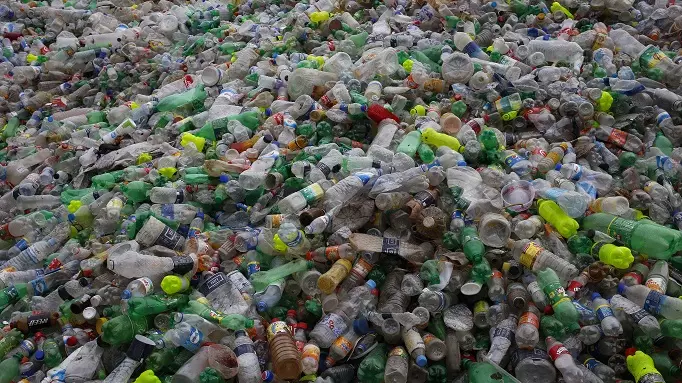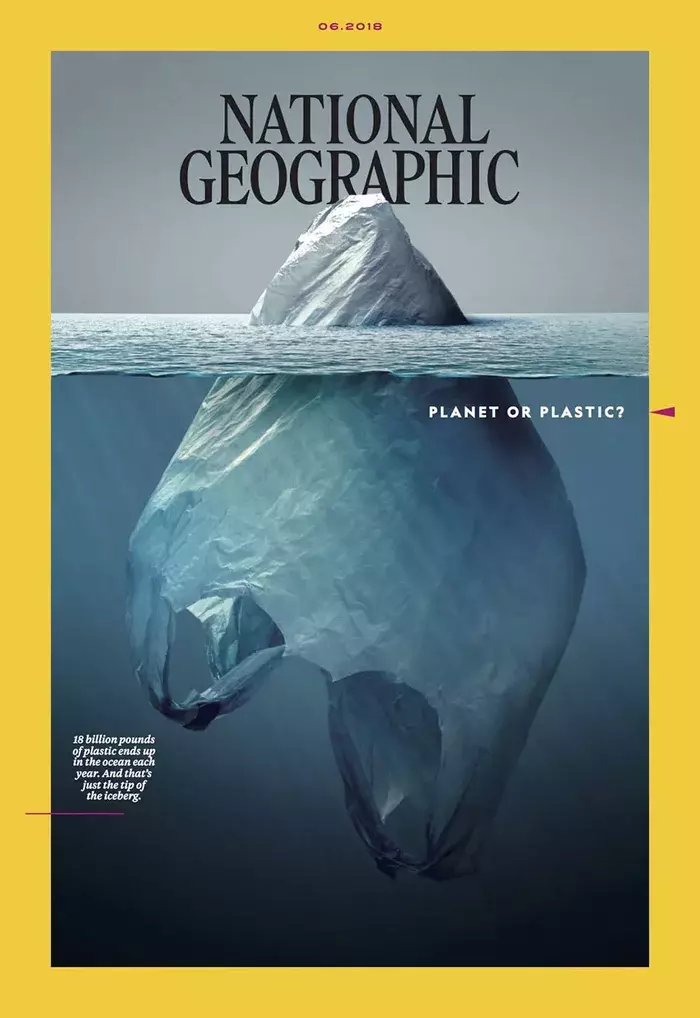
National Geographic is a standard bearer as far as environmentalist journalism goes, but the magazine really has outdone itself this month.

Their latest front cover uses startling imagery to bring to light the plight of the environment thanks to plastic pollution, with artwork by Mexican artist Jorge Gamboa that shows what appears to be an iceberg floating in the ocean, on first glance - however, below the waterline, the ice blends into an image of a submerged plastic bag.
Advert
The cover was shared to Twitter on Wednesday by Vaughn Wallace, the magazine's senior photo editor. It's a striking visual metaphor and, unsurprisingly, it has provoked plenty of debate and discussion online.
"Brilliant cover. This one will be an icon. Well done, @NatGeo," wrote Gerald Butts on Twitter, the Principal Secretary to Canadian Prime Minister Justin Trudeau.
Meanwhile, Saikat Datta, the South East Asia editor of the Asia Times, added: "National Geographic outdoes itself with this brilliant cover and a dire warning. Planet, or plastic?"
National Geographic is using the cover to launch a campaign called 'Planet or Plastic?' which aims to highlight the problems caused by our dependence on single-use plastic such as carrier bags, plastic water bottles, coffee cups and other items such as straws and cutlery.
Advert
The magazine itself, which is usually wrapped in plastic when it appears in newsagents, has been packaged in paper for sale in outlets in the United States, the UK and India.
"Will eliminating a plastic magazine wrapper save the planet? Well, no. But it's an example of the kind of relatively easy action that every company, every government and every person can take," said Susan Goldberg, the magazine's editor-in-chief.
"When you put it together, that adds up to real change."
The need for change has been put into stark contrast in the last few weeks, as environmentalists have made a concerted effort to highlight the problems of single-use plastic.
Advert
A sperm whale was found dead off the Spanish coast with almost 30kg of plastic inside it, while photos have gone viral showing the effect of plastic on seabirds.
Scientists have estimated that eight million tonnes of plastic waste enter the oceans every year, which could double in the near future if consumer trends are not radically altered. Most of this plastic - 80 percent by some estimates - comes from land use, a fair proportion of which results from single-use items that end up in the water system.
Small-scale lifestyle changes could have a serious effect on this - something that the UK government is attempting to promote.
Even the UK parliament are getting in on the act, with the so-called 'latte levy' on plastic coffee cups being introduced this week, while plastic bottles, cutlery and straws have been banned from the Houses of Parliament.
Featured Image Credit: PATopics: Environment, World News, plastic pollution, trash isles